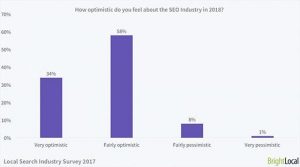Marketers must partner with IT to audit their martech stack, increase adoption through accountability and rethink team structures for greater efficiency.
One day this month you’ll be hard at work, between meeting with vendors or reviewing an implementation plan, when an unexpected appointment pops on your calendar: Finance wants to review marketing’s technology expenses, top to bottom.
In the meeting, you’re asked to work with IT and identify the tools you can cut to save the company millions. Are you ready for that meeting? Although this is my dramatized version of my fear for marketers, it need not be the end of the story.
Marketing technology’s rise has been driven by a desire for independence from strict IT controls and a vision for cloud-based technologies IT did not yet trust. This distrust or “specialization,” if worded more kindly, is a key reason why marketers continue to spend a quarter of their expense budgets on marketing technologies.
To support this independence, marketing also spends handsomely on staff to operate these technologies, on top of what is spent on the technology itself.
What marketing lacks, IT has
Marketing teams tasked with leveraging that same technology often lack the technical skills or operational bandwidth to master the technologies their leadership has funded. Up to 63% of respondents in Gartner’s 2023 Marketing Technology Survey report (registration required) that they lack the skills to integrate or operate the tools in their stack. (Disclosure: I work for Gartner.)
Not only is this paucity of talent inhibiting marketing innovation, but it is also a key driver of falling martech stack utilization, which the survey showed had dropped to just 33% of the totality of capabilities in the stack in 2023, compared to 58% in 2020. Although pockets of success exist, the lack of technical talent at scale has been accepted as a cost of doing business.
However, the changing nature of IT teams gives hope that marketing can own less while achieving more. 78% of organizations report that they have centralized customer data management within IT.
On average, IT is taking greater ownership across key martech activities. The frequency of marketing teams with sole ownership is receding. But change is not universal, as another 59% of marketing leaders agree with the statement that “our IT policies and/or strategy constrain our use of emerging technologies.”
Marketing wanted operational independence but should have been looking for a partnership. While martech teams are critically short of the staff and talent needed to run their platforms, CIOs seek “business technologists” who can leverage low/no-code platforms to build mini apps.
And for marketers, the question remains: When finance, your CEO or board of directors comes calling, what will you say is the plan to increase martech utilization and avoid cuts to your existing budget?
Rely on teamwork
The first way out of this dilemma is for marketers to refactor how they work with the top IT executive at their company. A recent survey of CxOs outside of IT found that the most digitally proficient CxOs met with their CIO counterparts twice a month on average.
They also dedicate plenty of staff to digital initiatives: over 25% — marketing leaders must consider how much of their team is working on digital, as many of the most successful fusion teams are actually 70% business and 30% IT staff.
Marketers must establish a collaborative cadence for solving problems, sharing priorities and getting teams what they need. They’ll need to find executive-level stakeholders who can approve variations from policy when warranted so that transformation doesn’t stop just because legal is worried.
Utilize what is at hand
Next, marketers have to make utilization a priority through accountability. The progressive use of technology can’t be an afterthought: it has to be firmly planted in the culture and operations of the marketing team.
Marketers should establish clear accountability for their team against metrics they can measure and influence themselves, such as the level of utilization or the number of additional use cases stood up or hypotheses tested. They can partner with HR to include these in the 2024 goals for their team.
Taking stock of the state of utilization of your martech stack using an audit to document the level of martech utilization in your organization should also be top of mind for marketers. On average, for an organization with $ 250 million in annual revenue, Gartner data indicates an estimated $ 3.8 million in underutilized martech spend.
For marketers to master this in their own stack, they must ensure that their audit captures two key data points for each technology in the stack: the percentage of its capabilities in use and the annual spend on the platform.
These data points should give a scorecard value for tech spend that could be put to better use. Marketing leaders will be prepared for frank conversations about resource management throughout 2024 and beyond.
Focus on team structure
Finally, marketers must look for new team structures that leverage IT’s more business-savvy orientation. Marketers can use a three-tiered system to sort modes of governance between:
- Enterprise projects (tier 1).
- Hybrid projects (tier 2).
- Business-led experiments (tier 3).
The default is hybrid, where projects are business-led, with about 75% of the decision-making made by the business staff and 25% by IT. Teams are aligned to support internal capabilities like products, so they remain engaged in planning and prioritization, even after delivering an individual release or feature. They can make long-term investments and ensure that priority items in the backlog don’t end up in the bin.
When a capability implicates enterprise-wide capabilities, it moves to tier 1, such as an enterprise data warehouse. If it’s a narrower proof of concept run by a single business function, a POC with a new digital advertising vendor, for example, lands in tier 3, which is entirely independent of IT. The aim is for 50% of projects to fit tier 2, 35% for tier 1 and 15% for tier 3.
Prioritization is key
Just 5% of consumers recalled a memorable and valuable digital interaction with a brand. Creating any immediate value that is memorable for a consumer is a tall order for marketers, so focus and prioritize your collaboration with digital teams and say no — a lot more.
When teams increase their martech spend but still wonder how they will get consumers to sign up for an email newsletter, digital strategy has clearly lost its way.
Instead, marketers must look for ways to build trust by helping to shake consumers out of their old and unproductive habits. Marketers are too willing to don the armor of activity, doing more for its own sake.
Instead, we should be willing to release some ownership for the sake of our customers to focus on the ideas and strategies that break through and change minds. Gartner calls this approach “catalytic marketing.” With the right focus, you can find what it can offer your organization as an alternative to the sea of sameness.
Now is the perfect time to revisit assumptions about their martech stack and pursue collaboration with IT with renewed enthusiasm. Marketing leaders must take stock of their martech investments and adoption by their business users and work to assess utilization and create accountability for resource efficiency.
By building a “better together” culture, marketing and IT teams can engage in the common purpose of advancing business goals rather than worrying about who reports to whom.
The post How marketers can reinvent the IT-marketing dynamics appeared first on MarTech.
MarTech(4)







